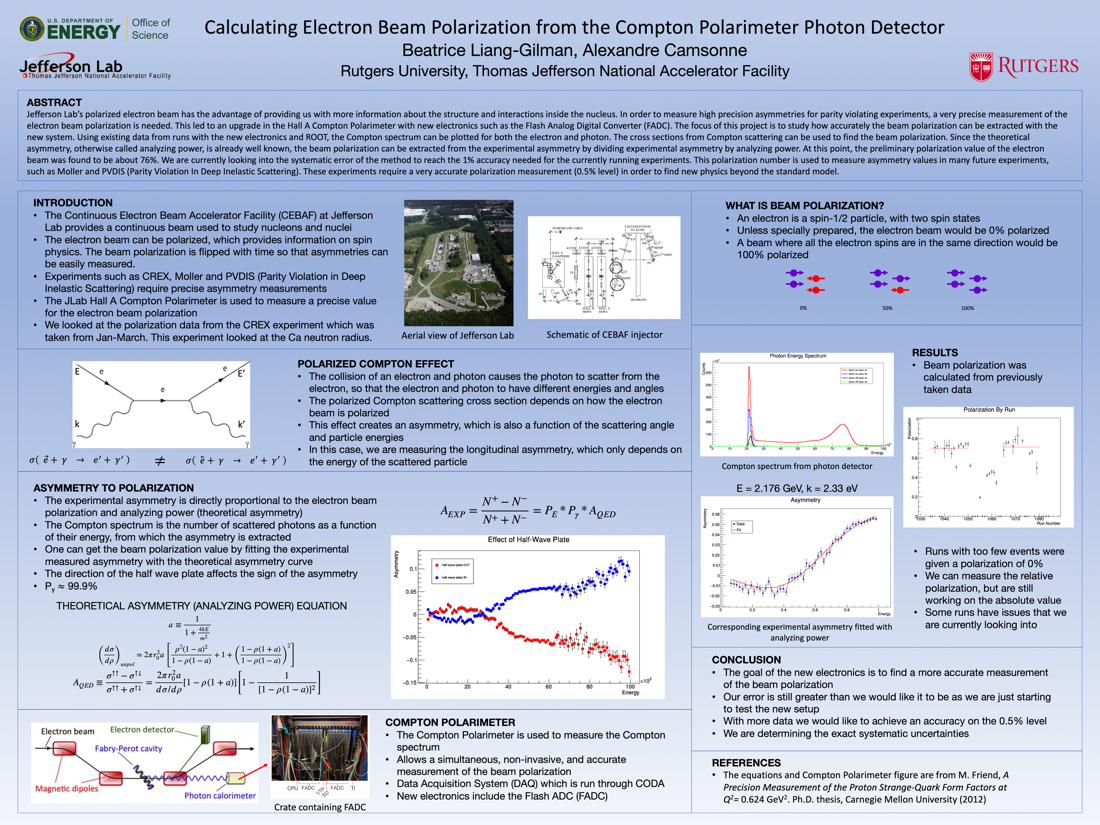Undergraduate Research at Jefferson Lab
Calculating Electron Beam Polarization from the Compton Polarimeter Photon Detector
Student: Beatrice Liang-Gilman
School: Rutgers University
Mentored By: Alexandre Camsonne
Polarized electron beams have the benefit of providing us with more information about the structure and interactions of electrons with nucleons and nuclei. Since Jefferson Lab has the ability to provide polarized electron beam, it is necessary to measure the beam polarization. For instance, in order to measure high precision asymmetries for parity violating experiments, a very precise measurement of the electron beam polarization is needed. This led to an upgrade in the Hall A Compton Polarimeter. New electronics such as the Flash Analog Digital Converter (FADC) were implemented to improve the accuracy of the polarization measurement. The focus of this project is to study how accurately the beam polarization can be extracted with the new system. Using existing data obtained with the new electronics, the Compton spectrum can be measured for both the electron and photon. The cross sections from Compton scattering can be used to find the beam polarization. Since the theoretical asymmetry, otherwise called analyzing power, is already well known, the beam polarization can be extracted from the experimental asymmetry by dividing the experimental asymmetry by the analyzing power. At this point, the preliminary polarization value of the electron beam was found to be about 76%. We are currently looking into the systematic uncertainties of the method, with the goal of reaching the 1% accuracy needed for the currently running experiments. This polarization measurement technique can be used to measure asymmetry values in many future experiments, such as Moller and PVDIS (Parity Violation In Deep Inelastic Scattering). These experiments require a very accurate polarization measurement (0.5% level) in order to find new physics beyond the standard model.
[Watch the presentation on YouTube]

Citation and linking information
For questions about this page, please contact Education Web Administrator.
